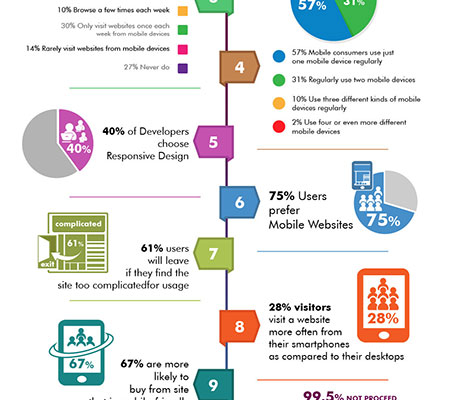The Development Of Web Site Design: From Past To Present
The Development Of Web Site Design: From Past To Present
Blog Article
Written By-Booker Hejlesen
In the past, websites were simple and focused on information. Navigation was straight, and layout was for desktops. Currently, customer experience is key. Data guides styles for easy navigating. Receptive designs suit different devices. SEO Medical Abbreviation FT Worth , dark setting reduces strain, and minimal food selections improve navigating. Interactive attributes engage individuals, and vibrant visuals stick out. AI assimilation improves interaction. See exactly how layout has developed to improve your on-line journey.
Very Early Days of Website Design
In the early days of web design, simpleness reigned supreme. Sites were standard, with minimal colors, typefaces, and layouts. The focus was on providing info as opposed to showy visuals. Customers accessed the internet via slow dial-up connections, so rate and functionality were key.
Navigating menus were straightforward, generally located at the top or side of the page. Web sites were made for home computer, as mobile browsing wasn't yet prevalent. Material was king, and designers prioritized easy readability over complex style aspects.
HTML was the key coding language used, and designers had to function within its constraints. Computer animations and interactive attributes were very little compared to today's requirements. Internet sites were static, with little dynamic content or tailored user experiences.
Rise of User-Focused Design
With the advancement of site style, a shift towards user-focused layout concepts has come to be increasingly prominent. Today, producing internet sites that prioritize individual experience is vital for involving site visitors and accomplishing business objectives. User-focused style entails recognizing the demands, preferences, and behaviors of your target audience to customize the website's format, material, and includes accordingly.
Designers currently perform thorough study, such as individual surveys and usability testing, to collect insights and feedback directly from customers. This data-driven approach assists in developing user-friendly navigating, clear calls-to-action, and aesthetically attractive interfaces that reverberate with visitors. By placing the customer at the center of the layout procedure, sites can supply a much more individualized and enjoyable experience.
Responsive style has actually likewise emerged as a key facet of user-focused design, guaranteeing that websites are optimized for different devices and display sizes. This flexibility boosts availability and use, accommodating the diverse means customers interact with web sites today. Basically, the increase of user-focused design symbolizes a change towards creating digital experiences that prioritize the needs and expectations of completion user.
Modern Trends in Website Design
Explore the latest trends shaping website design today. One popular fad is dark mode style, providing a streamlined and modern-day look while reducing eye stress in low-light atmospheres. An additional vital trend is minimal navigation, streamlining food selections and enhancing user experience by focusing on essential elements. Integrating micro-interactions, such as animated switches or scrolling effects, can produce a much more interesting and interactive web site. Receptive style stays important, making sure seamless customer experiences throughout various gadgets. In addition, making use of strong typography and unbalanced designs can add aesthetic rate of interest and draw attention to particular content.
Incorporating AI innovation, like chatbots for consumer assistance or customized recommendations, enhances individual involvement and streamlines processes. Ease of access has additionally become a significant pattern, with developers prioritizing comprehensive style methods to deal with diverse customer requirements. Accepting sustainability by maximizing web site performance for rate and effectiveness is an additional emerging fad in web design. Working together with customer feedback and data analytics to iterate and boost design continuously is vital for remaining appropriate in the ever-evolving digital landscape. By welcoming these contemporary trends, you can create an aesthetically enticing, easy to use website that reverberates with your audience.
Conclusion
As you assess the evolution of internet site design from the very early days to now, you can see just how user-focused layout has actually become the driving force behind modern patterns.
Embrace the trip of change and adjustment in web design, always keeping the customer experience at the forefront.
Remain current with the most recent fads and technologies, and never stop advancing your approach to develop visually stunning and easy to use websites.
Advance, adjust, and develop - the future of website design remains in your hands.
